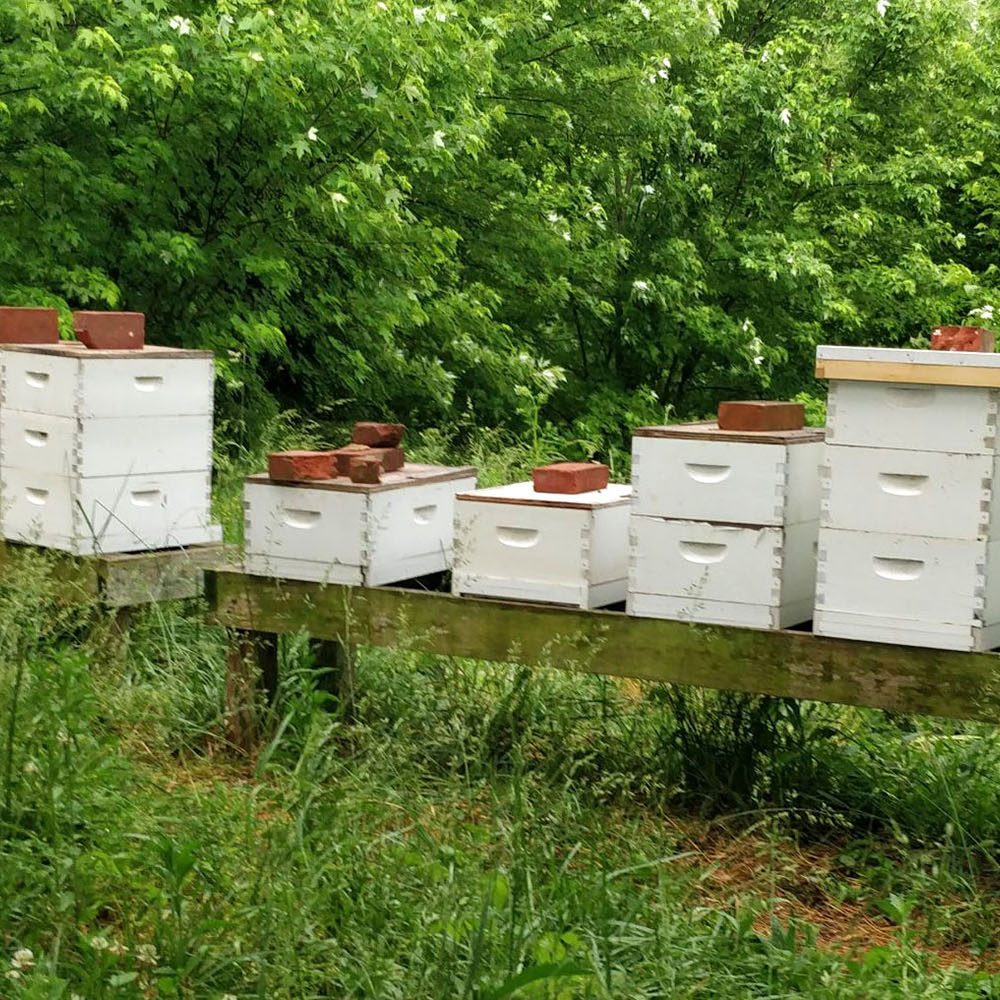
My notes and thoughts from Michael Palmer‘s Presentation on Brood Factories
In beekeeping, efficient resource management is key to thriving hives. Michael Palmer introduces the concept of brood factories—a game-changer for any apiary. This strategy can transform how you support and expand your bee colonies. Here’s a deep dive into the essentials of brood factories and how they can elevate your beekeeping practice.
What is a Brood Factory?
A brood factory is a hive specifically managed to produce surplus brood and other resources. Think of it as the powerhouse of your apiary, consistently supplying brood to boost other colonies or start new ones. This approach ensures your bees are always ready to tackle the challenges of the season. Michael’s focus is on having a large number of laying queens in the apiary.
Flexibility in Hive Types
Any beehive style can be used as a brood factory, as long as you stick to the same frame size across your apiary. This compatibility is crucial for easy transfer of brood, honey and pollen frames to other hives.
Strategic Uses of a Brood Factory
Brood factories are versatile and can be deployed in various ways to strengthen your apiary:
- Boosting Weak Colonies: Transfer frames of hatching brood to weaker hives to boost them.
- Boosting Honey Production: Supplement honey-producing hives with additional brood at the right moment to maximize their workforce and yield. This is a highly effective way to produce honey during a flow.
- Boosting Cell Builders: Provide emerging brood to cell builders, ensuring strong cell builders that build healthy and productive queens.
- Starting Nucleus Colonies: Use the extra brood to create new nucleus colonies to expand your apiary or for more sustainability.
The Power of Bee Bombs
One of Palmer’s standout techniques is the “Bee Bomb.” He places a box of capped or emerging brood at the bottom of a slow or weak hive, triggering rapid population growth. This sudden boost can revitalize a struggling colony. Note that he says not to do this to a hive that need to be requeened or has a legitimate problem, but rather to boost hives that struggling to get going.
The Mechanics of Brood Management
To manage a brood factory effectively, follow these key practices:
- Frame Harvesting: Every 10-14 days take a couple frames of brood from each resource hive. Remove enough brood to prevent swarming but not so much that it slows down the hive’s overall growth.
- Empy Frame Placement: Place empty frames of comb or foundation in the center of the brood nest, surrounded by existing brood. This encourages the queen to lay more eggs, expanding the brood nest.
- Queen Spotting: Always make sure you don’t accidentally remove the queen when taking brood frames.
- Honey Management: Take some honey frames from the brood factory if needed to provide space for nectar. This prevents the hive from shrinking the brood nest when it backfills with honey.
Creating Nucleus Colonies
When setting up nucleus colonies (nucs), it’s crucial to balance the mix of resources:
- Include a frame each of honey, mixed brood, capped brood, and empty comb.
- Avoid using all capped brood; mixed brood (with both capped and open cells) is better for holding bees, ensuring they stay and nurture the new colony.
Seasonal Adjustments
As the season ends, it’s important to prepare the brood factories for winter:
- In the fall scale back each brood factory to 3 or 4 frames of brood to focus on building up for winter.
- Maintain a smaller hive size going into winter for easier management.
Managing Varroa Mites
Varroa mites are a persistent threat, but brood factories offer a strategic advantage:
- Since you frequently remove sealed brood from brood factories, you can delay mite treatments slightly.
- However, prioritize treating the hives that received brood from the factory, as these are more likely to have increased mite loads.
Preparing for Winter Feeding
Winter preparation is crucial for hive survival:
- Assess and mark each hive based on its food stores.
- Start feeding as soon as the fall nectar flow ends, typically when you no longer smell goldenrod curing in the hives.
- Early feeding ensures the bees have ample stores to make it through the winter.
Michael’s Seasonal Playbook
Palmer’s approach to brood factory management throughout the year is straightforward:
- Spring: Focus on building up the colonies’ strength.
- Summer: Harvest brood for cell building and gradually reduce colony size to prevent swarming.
- Fall: Create nucleus colonies and prepare the brood factories for winter.
- Winter: Maintain the brood factories as smaller, manageable units ready to ramp up in the next season.
My Thoughts (Josiah)
The success of brood factories lies in maintaining the right hive size. Colonies thrive when they’re not too small or too large. Regularly removing frames of brood and honey keeps the hive in that sweet spot, allowing for continuous growth and quick recovery from resource extraction.
For my apiary, using 8-frame medium hives, I plan to scale back to one box in the fall as this size of hive has overwintered very well for me in the past. I envision setting up hive stands where production hives are at the corners and brood factories are positioned between them. This setup should streamline management and ensure easy access to resources when needed.
Final Thoughts
Brood factories are a powerful strategy in beekeeping, providing a flexible and efficient way to manage hive populations and resources. By adopting Michael Palmer’s methods and tailoring them to your apiary, you can enhance the health and productivity of your bee colonies, ensuring a healthy and thriving beekeeping operation.
I love these notes. The presentations of Mike’s go so fast, and have some much information. Thank you for posting them.
Glad you enjoyed the notes! I thought they might be helpful to someone.